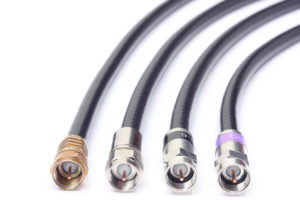 Television sure looks great these days. With the right TV wiring, you should be enjoying amazing picture quality and streaming content at lightning speeds — without an ugly pile of wires.
Television sure looks great these days. With the right TV wiring, you should be enjoying amazing picture quality and streaming content at lightning speeds — without an ugly pile of wires.
Make sure you’re getting the most out of your cable TV and Internet with efficient, safe, and powerful wiring that supports your needs. Here’s how:
Upgrade to high-speed wiring
If you want great TV quality and fast Internet speeds at the same time, you need modern wiring. Old TV wiring often tops out at 500 Mbps, while new wiring can handle 1 Gbps or higher. Even a brand new cable box and modem will fail to reach maximum speeds if the building’s wiring cannot handle the bandwidth.
Want crystal clear TV and streaming content — and your family has multiple computers and devices online? Ask an electrician to outfit your home with high-speed wiring.
Know how to protect your TV wiring
Cable feels pretty heavy-duty and tough, right? Don’t let that fool you — there’s a limit to how much you can bend, twist, and crush a cable before its performance suffers.
Keep these tips in mind when running cable, connecting to devices, and placing furniture:
- Don’t bend your TV wiring more than 90 degrees. The signal will lose quality if the inner wires get pinched.
- Avoid crushing. Even cables with thick insulation can get damaged by the full weight of an entertainment center or other furniture.
- Excess cable? Bundle it in loops and secure with a twist-tie or string (rather than letting it get jumbled up).
- Stapling? Be gentle. There are cable staplers meant for the task. If you don’t have the right stapler, make sure you do not pinch or puncture the wiring.
Avoid shared TV and internet if possible
Your Internet provider’s advertised speeds refer to a maximum. When your TV wiring also provides Internet service, remember that the data physically shares the same space. Connect your modem and router to a cable jack separate from your TV wiring if possible.
Use a high-capacity splitter — and don’t overload
Splitters — the adapters that let you run TV wiring, Ethernet, or other cable services from one wall jack — come with bandwidth ratings. Look for splitters rated for signals of 1 GHz or higher. With an adequate splitter, your TV wiring will not slow down your Internet speeds (and your Internet usage will not interfere with picture quality).
Just like too many appliances can overload a wall outlet, your devices connected to cable TV wiring can overload a splitter. Avoid running TV, Internet, digital phone, home networking, and streaming devices through just one splitter. You’ll get better performance if you add more wiring and activate an additional cable jack as necessary.
Wrench-tighten your connectors
Yes, cable connectors can be hand-tightened and operate normally. However, you should use a wrench to fully tighten everything after you decide your set-up. Hand-tightened connections can be more prone to damaging your TV wiring and devices.
Leave advanced set-ups to an electrician
Are you comfortable with cutting wire, using a crimping tool, and customizing your own fittings? Most people lack the experience and wire-cutting tools to safely handle DIY wiring projects.
Let your electrician handle advanced projects like running new cable or designing TV wiring for a home theater room. Nobody wants to start a fire or shock themselves. A professional electrician handles TV wiring quickly and efficiently so you can enjoy your entertainment as soon as possible, without problems down the road.

